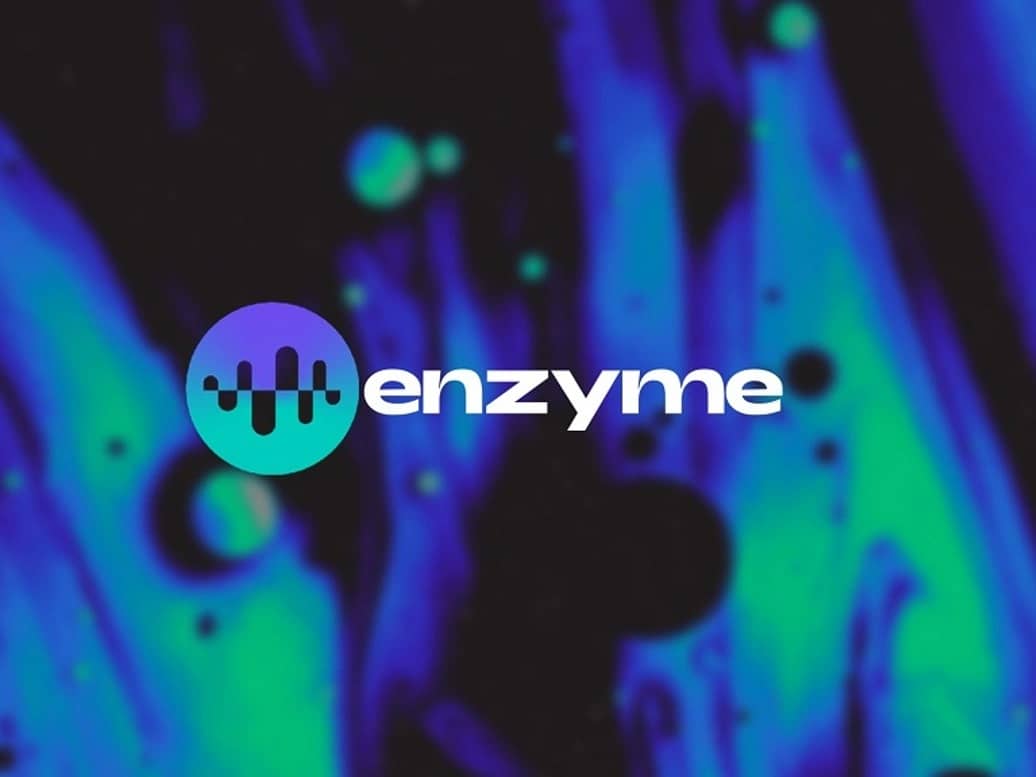订阅 wiki
Share wiki
Bookmark
Enzyme
Enzyme
Enzyme(于 2019 年推出)是一个基于 以太坊 的协议,用于 去中心化 的链上资产管理。它是一个供个人或实体在可定制且安全的环境中管理自己和他人的财富的协议。Enzyme 使任何人都可以设置、管理和投资于定制的链上 投资 工具。[1][2]
它是一个 Defi 资产管理协议,部署在 以太坊 和 Polygon 上。该协议本身由两层组成,即基金层和基础设施层,并且附带其 Javascript 库,从而支持 Web 浏览器。[6][7]
概述
Enzyme 协议最初由一家名为 Melonport AG 的 瑞士 公司开发。在 2019 年 2 月该协议的主网上线后,Melonport AG 停止运营,该协议的治理权移交给 Enzyme 理事会。理事会由 Enzyme 技术委员会 (ETC) 和 Enzyme 用户代表 (EUR) 的代表组成,这两者将在后续章节中进行描述。[4][15]
Enzyme 旨在创建一个替代系统。使用该项目的 Web 门户,用户可以投资于其他用户发起的基金和投资组合,而其他用户可以投资于他们的创作。Enzyme Finance 协议使用 MLN 加密货币 来执行平台上的各种操作。
Enzyme Finance 以前称为 Melon 协议。它成立于 2015 年,并以希腊语中“未来”一词命名为 Melon,因为当时它具有雄心壮志。
该代币具有新的图标和名称,但 MLN 代码和合约地址保持不变。[3][2]
Enzyme Finance 是 智能合约 的集合,其计算由 以太坊区块链 执行。 因此,交易费用以以太币支付。这些费用涵盖了使用以太坊计算能力和 Enzyme 软件的成本。[12][13]
信托责任和利益冲突
Enzyme 理事会受 信托 责任、指导原则和 Enzyme 理事会章程的约束。这意味着 Enzyme 理事会成员有义务以 Enzyme 协议的最佳利益行事。任何违反其 信托 责任的成员将面临被撤销席位的风险。
如果 Enzyme 理事会成员在特定问题上存在利益冲突,他们应立即通知其他成员并放弃对该问题的投票。
Enzyme 理事会设有一名主席和一名副主席,他们每两年轮换一次。他们的职责包括协调会议和议程。Enzyme 理事会还包含几个小组,这些小组在特定主题上发挥领导作用,例如审计、功能、生态系统项目、网络参数、代币经济学、社区电话等。
Enzyme 管理员
两个主要方管理 Enzyme 协议中的特权功能:Avantgarde Core(部署者)和 Enzyme 理事会(管理员)。它们是:
作为该协议的首席开发人员,Avantgarde Core 部署所有合约并在发布上线之前配置所有合约。一旦发布上线,受保护功能的完全访问控制权将移交给 Enzyme 理事会。
Enzyme 理事会 DAO 由两个小组委员会组成:Enzyme 技术委员会 (ETC) 和 Enzyme 公开业务 (EEB)。ETC 是一个由技术娴熟的指定方组成的联盟,一旦发布上线,他们共同拥有(通过 Aragon)对所有受保护的协议范围功能的投票权。
Enzyme 理事会是一个完全受信任的实体,这是该协议安全假设的核心。[4]
Enzyme 技术委员会 (ETC)
成立 Enzyme 技术委员会是为了在协议的决策过程中提供技术专业知识和效率。这种设计试图找到最佳数量的决策者,以确保快速决策。通过身份和 信托 责任约束成员可以降低任何恶意行为的风险。ETC 的主要设计目的是通过在决策中提供技术专业知识和速度来代表其最重要的利益相关者(其用户)。
ETC 由各种人员和实体组成。最初的成员由 Melonport AG 团队在 2019 年初 Melon 协议(后来更名为 Enzyme)推出之前任命。[5]
Enzyme 用户代表 (EUR)
Enzyme 用户代表旨在代表用户收集、优先排序并向 Enzyme 理事会提供用户反馈。
目的是让 ETC 和 EUR 保持密切关系并保持健康的反馈循环。ETC 需要解决 EUR 提出的问题,并且两个小组委员会应共同努力,确定 Enzyme 网络用户的迫切需求并确定其优先级。
用户可以选择代表将其利益代表在 Enzyme 理事会上。符合条件的 EUR 管理的产品必须具有相当于以 USDC 计算的 AUM 的 1% 的最低资产阈值。
ETC: EUR 的比例目前为 5:2。
EUR 通过检查 ETC 做出的决定来帮助平衡权力,并且可以告知用户任何可疑活动。EUR 可以投票排除违反 MC 章程的 Melon 理事会成员(通过三分之二的多数票)。
EUR 目前使用与 Melon 基金创建相关的仅限邀请的 Telegram 群组进行协调。这是他们目前用来提名和投票 EUR 的论坛。
EUR 预计也会每两个月举行一次会议;一次与 ETC 一起举行,一次独立于 ETC 举行。他们的职责包括以下内容:
- 社区电话:组织和策划社区电话。
- 用户 反馈:整理和收集生态系统中用户的反馈,以整合到理事会战略和路线图中。
- 增长:帮助扩大用户群并保护他们的最佳利益。
- 监控:监督和检查 ETC 是否正确地代表和优先考虑用户的最佳利益。[14]
MLN 代币
MLN 是一个 以太坊 代币,为 Enzyme(以前称为 Melon 协议)提供支持,该协议旨在促进 DeFi 生态系统的链上资产管理。MLN 允许用户构建、共享和探索 DeFi 投资策略(称为“金库”),同时按历史业绩和风险概况进行筛选。[8]
MLN 加密货币用于执行基金运营以及对协议的软件策略(例如其通货膨胀率)进行投票。基金运营可能包括交易成本或业绩和管理费。
MLN 的总供应量为 2,070,263 个代币,可以在以下交易所进行交易:Binance、OKX、BingX、MEXC 和 Bitrue。[9][10]
该代币有两个用途:
- 用户以 MLN 代币支付使用费。
- 开发人员或外部贡献者可以通过提交赠款来赚取 MLN 代币。
治理
Enzyme 治理模型以用户为中心。它确保用户可以免许可地访问安全的资产管理协议,并受到网络中恶意行为者的保护。同时,用户可以选择从协议之上的持续创新和改进中受益,这些创新和改进受到 Enzyme 理事会的全面检查和分析的保护,并受 信托 责任的约束。[2]
Enzyme 理事会负责做出决策并维护网络用户的利益。用户始终保持完全控制权,并且是关于他们正在运行的软件的唯一决策者。
Enzyme 理事会和代币持有者都不能影响基金经理使用的智能合约代码。基金经理必须采取自愿行动才能升级到新版本的代码,并且如果基金的投资者对所使用的代码版本不满意,他们可以立即赎回其份额。基金经理永远不会被迫使用他们可能或可能不感到满意的新版本的代码。用户承担从可能包含安全漏洞的代码升级的全部责任。
因此,用户向特定版本的 Enzyme 协议的融合应向 Enzyme 理事会强烈表明他们与用户的观点和需求保持一致。
尽管 Enzyme 技术委员会 (ETC) 拥有并控制指向最新合约的 ENS 子域,但用户才是真正决定基于哪个版本开展业务的人,这构成了社区的强烈信号。智能合约的不可阻挡的特性进一步实现了这一点(一旦部署,Enzyme 合约就不能被部署者收回)。[11]
Enzyme 理事会的成员
- Janos Berghorn:KR1 投资者 (ETC)
- Giel Detienne:用户代表 (EUR)
- Mona El Isa:Avantgarde Finance 创始人兼首席执行官 (ETC)
- Felix Hartmann:Hartmann Capital 创始人兼用户 (EUR)
- Fabian Gompf:Parity Technologies 副总裁 (ETC)
- Will Harborne:Deversifi 创始人兼首席执行官 (ETC)
- Lev Livnev:dapp.org 的形式验证研究员和 Symbolic Capital Partners 的创始合伙人 (ETC)
- Martin Landfall:以太坊基金会和 DappHub 的形式验证研究员 (ETC)
- Nick Munoz-McDonald:G0 Group 的智能合约审计员和研究员 (ETC)
- Paul Salisbury:Blockchain Labs 创始人 (ETC)
- Zahreddine Touag:Woorton 创始人 (ETC)
合作伙伴
发现错误了吗?
